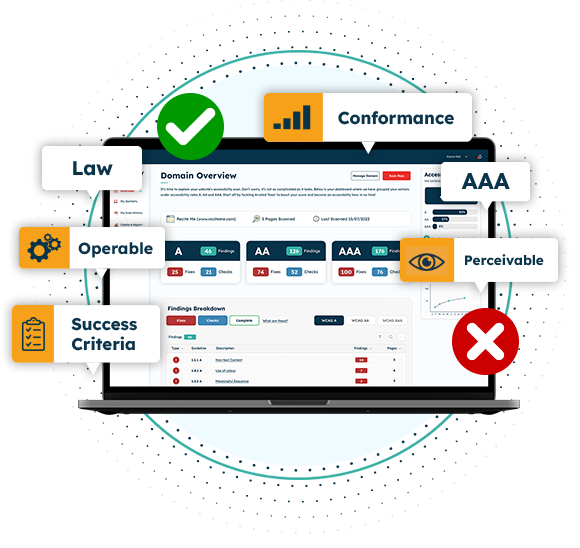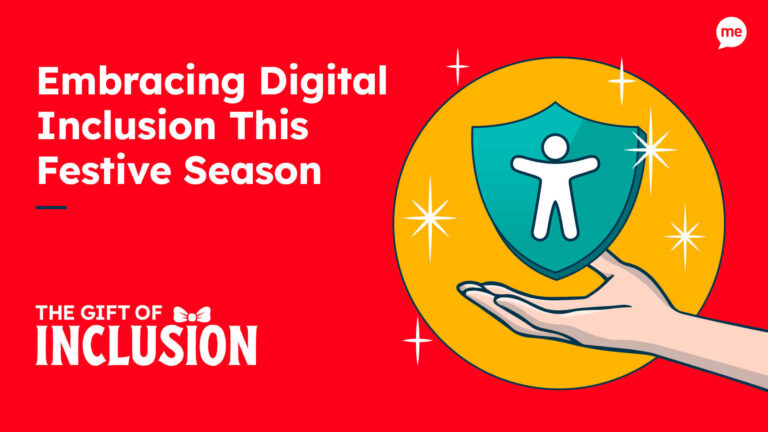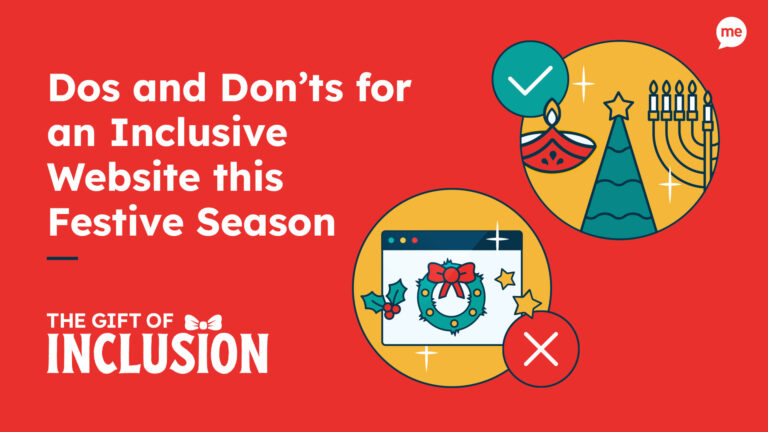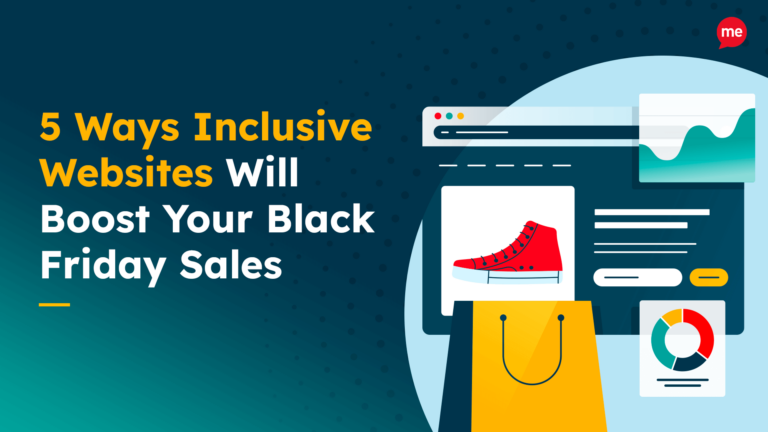The travel and tourism industry is one of the largest economic sectors worldwide. Yet, while the needs of the disabled community are usually accommodated on a physical level in the form of wheelchair ramps and hearing loops, etc., the needs of people facing online access barriers are often neglected.
Many Americans set aside 5-10% of their net annual salary for leisure travel, and a significant percentage of tourism transactions are performed online. Organizations without accessible websites are missing out on a considerable amount of income because the spending power of the US working-age population with disabilities is $490 billion.
Why is an Accessible Website Important to Customers?
People go to online travel, tourism, leisure, and hospitality websites for multiple reasons, including:
- Researching attractions
- Planning trips
- Comparing prices
- Assessing facilities
- Booking tickets
- Checking timetables
- Changing Itineraries
- Checking in online
Everyone should have the same opportunity to decide whether a particular destination or attraction is right for them. That means having equal access to information and reservation processes.
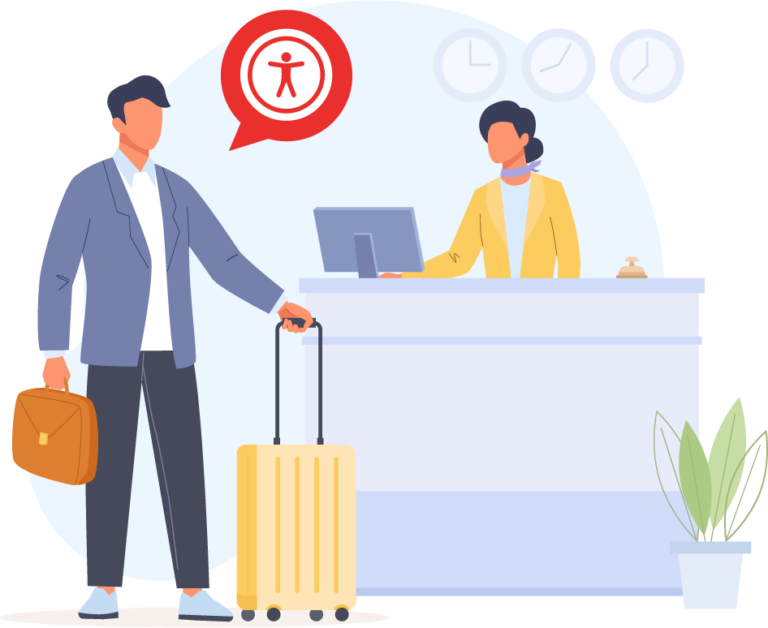
Why is an Accessible Website Essential for Your Business?
Having an accessible website demonstrates your commitment to exceptional service from the very first customer touchpoint. So, first and foremost, it’s the right thing to do. The technology of consumer engagement is changing, and organizations must be proactive in removing online barriers that prevent customers from researching and booking hassle-free trips and experiences. This is especially important in the leisure and hospitality sector, where customer service is paramount.
Of course, the primary incentive behind making your website accessible is the promise of increased revenue. Let’s look at the facts and figures:
- In 2023, travel spending left a $2.8 Trillion economic footprint on the U.S. economy and supported over 15 Million jobs
- Over $89 Billion of dollars generated in state & local tax revenue provided support for essential services, like education, emergency response, public safety & more.
- Representing 2.5% of the U.S. GDP, the travel and tourism industry is essential for connecting the United States.
Which Customers Face Online Access Barriers?
The target market in the travel, tourism, and hospitality sectors comprises a large number of people who are more likely to encounter online accessibility barriers. For example, foreign tourists who don’t read English as a first language.
However, even without considering the international market, the case for online inclusion on a domestic level is clear, because one in four Americans has a disability that can make accessing information online challenging:
- 14 million Americans are affected by vision impairments (National Institutes of Health).
- 20% of the population is neurodivergent (Northwestern Medicine).
- More than 54 million adults (16.5% of the population) are
- 65 and older (America’s Health Rankings).
- 67 million American residents speak a language other than English (Center for Immigration Studies).
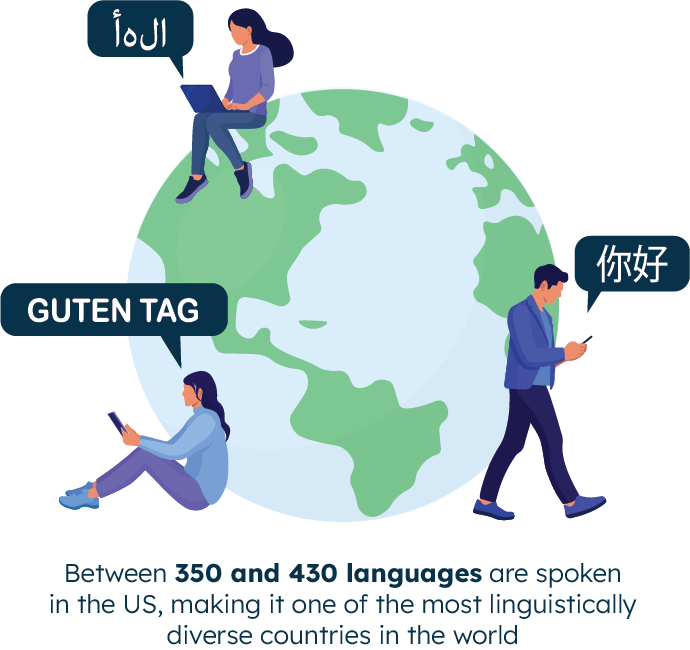
Accessibility Barrier Examples
Let’s look at some real-life examples of access barriers that could affect the flow of visitors to your business.
Anita has dyslexia. She’s a school teacher looking to organize a museum visit for a group of 30 children. But the museum’s website is poorly formatted. The copy has poor color contrast with the background, and the justified text and double spacing create a ‘river effect.’ So she can’t read any of the information. All she sees is blocks of white snaking through the illegible web copy. Ultimately, she gives up and begins researching alternative attractions.
Havier doesn’t read English as a first language. He and his friends are on a round-the-world trip, and he’s checking out the website of a regional tourism bureau so they can plan their visit and book all the excursions and activities they want to do during their stay. But, he can’t understand the content, and because the contact form is missing labels, he can’t file a request to reach out for help.
Agatha is 68 and has decreased vision. She’s the secretary for her local senior’s club looking to organize a day trip to a popular visitor’s center. Unfortunately, the website’s menu bar is complicated to navigate, and none of the on-page text has proper headings. Her screen reader can’t skip to the right sections to find out about opening hours and coach parking, so she closes the webpage and looks elsewhere.
How Travel, Tourism, and Hospitality Organizations are Breaking Down Barriers
Seeing that first impressions of businesses are now largely formed online, ensuring digital accessibility across websites and social media platforms holds significant importance.
Removing Digital Barriers
The journey toward inclusion begins way before individuals arrive at a hotel, museum, park, restaurant, or attraction of any kind. Often, it starts online with a Google search, making website accessibility a primary consideration.
With that in mind, several leading travel and tourism organizations have installed the Recite Me Toolbar to provide inclusive online experiences for individuals with a diverse range of access needs, including:
- Physical mobility issues
- Vision impairments like blindness, partial blindness, blurred vision, deaf-blindness, and color blindness.
- Neurodivergent traits like dyslexia, dyspraxia, hyperlexia, and dysgraphia.
- Attention disorders like attention deficit hyperactivity disorder (ADHD).
- Language and literacy problems.
- Learning disabilities.
- Hearing loss.
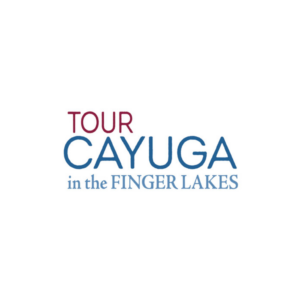

“A traveler’s journey starts with information, access to information. As Cayuga County’s destination marketing organization, we strive to have accurate and usable information for our visitors. Recite Me helps us educate and reach more visitors and help them plan their trip and set expectations. We also use the reports that Recite Me provides to help guide our marketing efforts and report to our stakeholders the necessity of having information and services for all.”
Claire Dunlap, Director of Marketing & Sales, Cayuga County Office of Tourism
Other Organizations Fighting for Inclusion
Globally, there are thousands of organizations leading the way on all fronts to improve accessibility. We are proud to work with numerous travel and tourism brands such as:
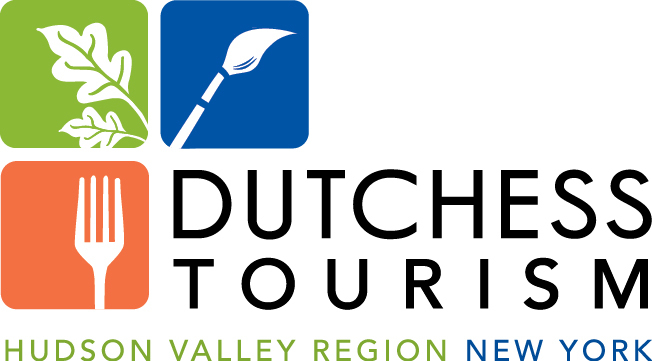
Dutchess County Tourism
In collaboration with the Office of Dutchess County, Dutchess Tourism works to drive visitation to the Hudson Valley Region in New York. In 2023, they partnered with Wheel the World, a travel solution for people with disabilities that allows its users to book hotels and tours that match their accessibility needs.
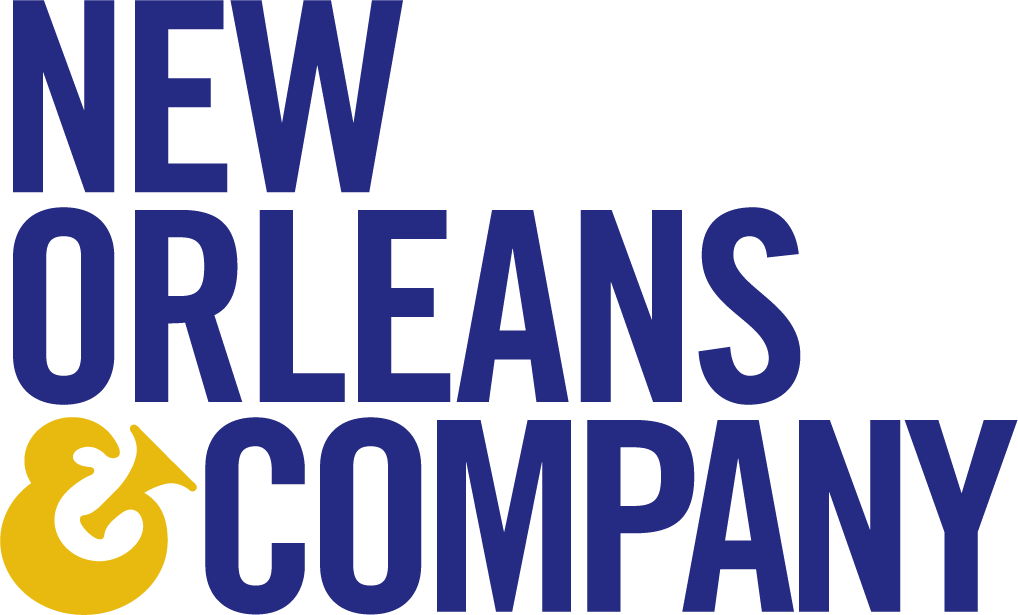
New Orleans & Company
New Orleans & Company is the official destination marketing organization for the New Orleans Tourism industry. For any visitors looking for accessible transportation, how to navigate the Crescent City via wheelchair, or resources for deaf and blind visitors, New Orleans & Company partnered with local experts to develop accessible-friendly guides on things to do while visiting New Orleans.

Visit Jacksonville
Visit Jacksonville is the leading destination resource for visitors and community stakeholders and a powerful economic development engine for Greater Jacksonville, Florida. With accessible hotels, museums, attractions, parks, restaurants, and more, travelers of all abilities have options in Jacksonville.
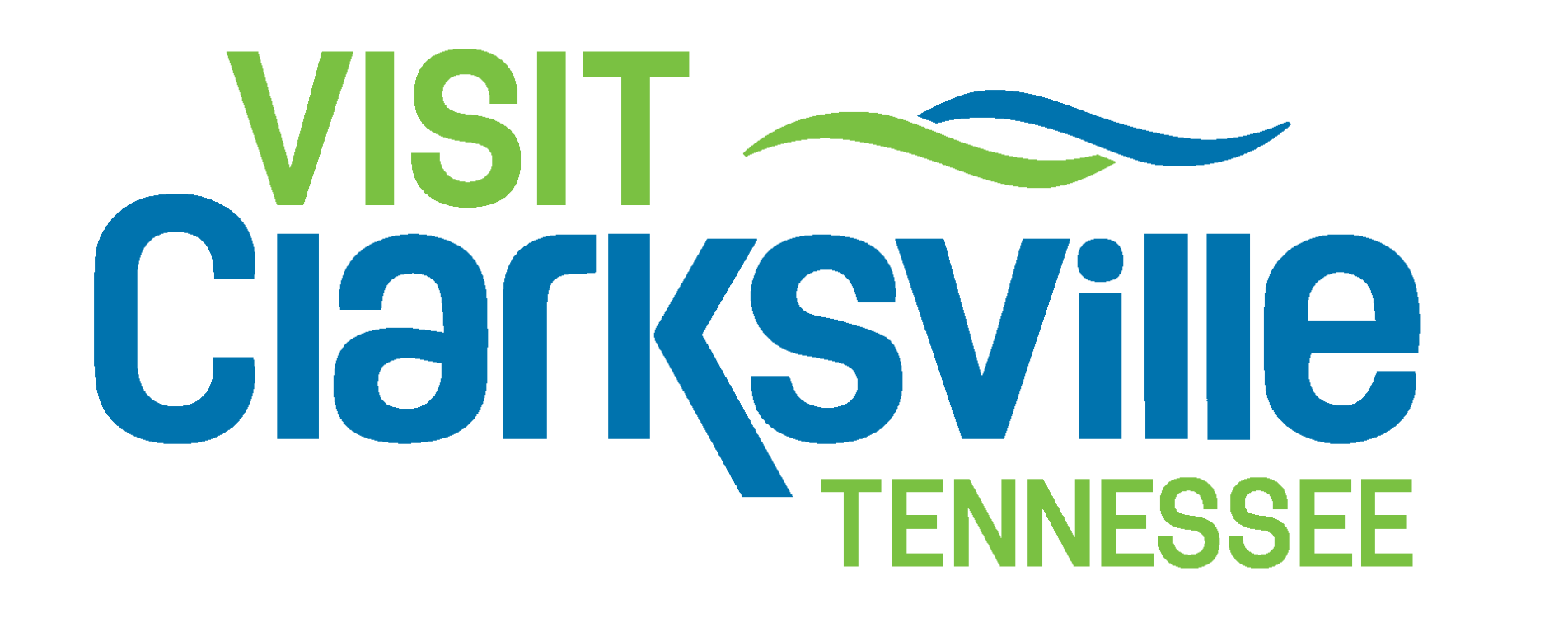
Visit Clarksville
From a community of vibrant and passionate business owners dedicated to making the city better to being home to the 101st Airborne Division, Air Assault, Visit Clarksville is the perfect place for a fun-filled weekend getaway.As a premier tourist destination, Visit Clarksville aims to be somewhere for everyone, and this includes being accessible to all visitors. Being able to provide visitors and residents with accessibility needs support online was a critical step forward.
How to Make Your Online Content More Accessible
To maximize inclusion and meet your organizational goals for growth, having an accessible website is a must. So, how do you go about making your website accessible?
1. Familiarize Yourself with WCAG Guidelines
2. Comply with National and Local Web Accessibility Legislation
There are two critical pieces of website accessibility legislation in the US: Title II of the Americans with Disabilities Act (ADA) and Section 508 Amendment to the Rehabilitation Act. Both exist to ensure that disabled website visitors are not treated less favorably online.
The U.S. Department of Justice recently released a final rule in April reaffirming the requirements of state and local governments to provide accessible websites and mobile applications.
3. Invest in Assistive Technology
A proven way of supporting people online is by utilizing assistive technology. Embedding accessibility software on your website allows you to support a diverse range of users by providing tools that enable them to create fully customizable online experiences.
How Can Recite Me Help?
Inaccessible online information prevents people from booking trips or exploring new cities, towns, and countries. Recite Me’s innovative suite of accessibility on-demand tools makes websites accessible and inclusive for a diverse range of people.
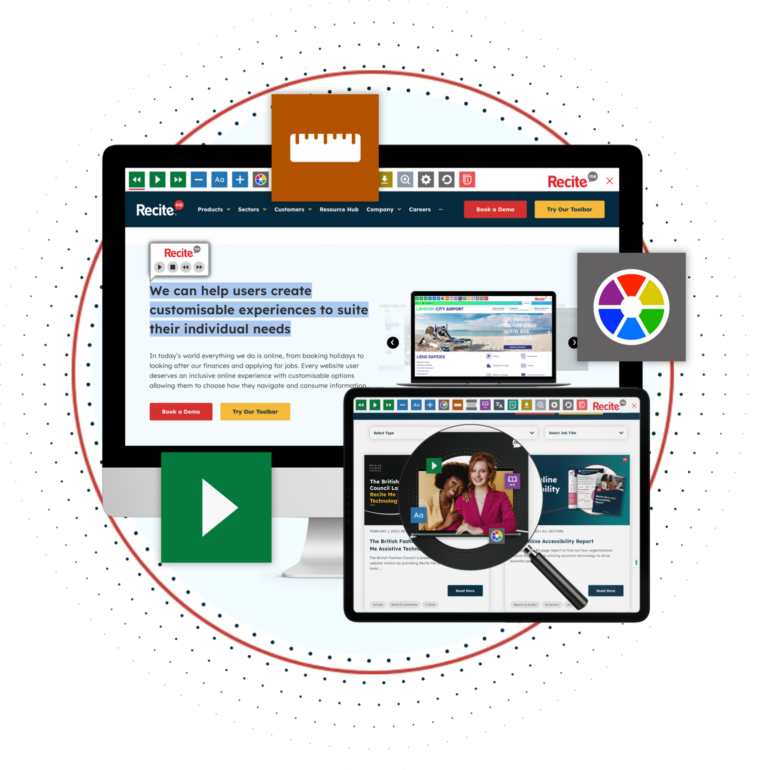
The Recite Me Toolbar
The Recite Me Assistive Toolbar goes beyond compliance to allow website visitors to customize a website to meet their unique needs. From text-to-speech functionality and dyslexia-friendly fonts to on-demand translation services, the toolbar removes digital barriers and enhances the overall digital experience for people with disabilities like dyslexia, visual impairments, color blindness, literacy challenges, or English as a second language.
Schedule a free demonstration, or take our toolbar for a test drive!
The Recite Me Accessibility Checker
The Recite Me Accessibility Checker does the legwork of making your website accessible from a technical perspective to ensure maximum accessibility on a broad scale. It audits back-end and front-end web development processes by running 396 separate compliance scans in line with international Web Content Accessibility Guidelines, then breaks down the issues you should be working to fix. The methodology follows a simple four-step process:
- Step 1: Scan Your Domains – Choose between scanning single or multiple pages.
- Step 2: Identify Accessibility Issues – Identify the locations of accessibility issues on your website.
- Step 3: Fix Accessibility Errors – Boost your accessibility score by prioritizing fixes in line with WCAG Levels A, AA, and AAA.
- Step 4: Track Your Progress – Create and share custom reports with your team and roadmap the next issues in your fix queue.
Schedule a free demonstration or run a free check of your website today!
